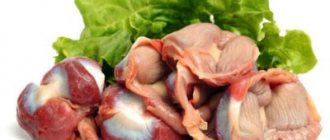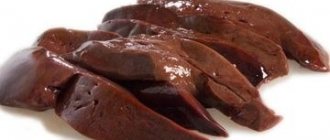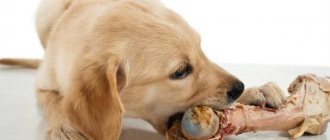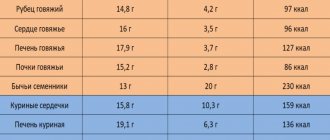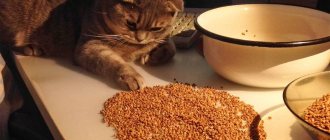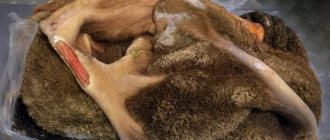The benefits of chicken meat for dogs
Feeding a dog chicken by-products is a double-edged sword, and even veterinarians do not have a consensus on this matter.
On the one hand, in their raw form they can contain harmful bacteria, antibiotics, and other harmful additives. On the other hand, when boiled, the nutritional value is lost. The issue is especially controversial with chicken heads, paws and other parts containing bones. Boiled bones are not recommended.
Chicken heads
Disputes about whether it is possible to give chicken heads to dogs do not subside on dog breeders forums. Many pet owners say that they give their dogs chicken heads as the main source of protein daily, and the four-legged animals feel great. Supporters of such a diet will sing that in nature a predator eats its prey with its head, and this does not cause any harm to it.
And although there are no tubular bones in the head, veterinarians do not advise doing this. If you decide to give your animal chicken heads, do not do it every day. The head has little protein and a lot of bones; it cannot replace meat. The beak must be removed. It contains nothing useful and is dangerous for the esophagus.
Dog owners living in rural areas should also remember that a dog accustomed to chicken heads may one day break loose and run out into the street. Such an animal is almost guaranteed to kill all the chickens and other poultry it encounters.
Necks can be fed even to a puppy older than 3-4 months. They do not contain tubular bones.
Paws are another very controversial by-product. They contain a lot of collagen and have a rich acid composition. Collagen is good for joints, skin and coat.
At the same time, the paws contain those very tubular bones that should absolutely not be given to a dog: their fragments can puncture the esophagus.
Wings
The wings contain the most bones and skin. Giving leather to dogs is not advisable. Therefore, using wings as feed is not recommended.
Tubular chicken bones should not be given to dogs. They can form sharp chips and damage the intestines. This is especially dangerous for puppies and small breeds.
It is not advisable to give your dog boiled bones. Raw bone in a dog's stomach is successfully digested. But boiled food is not processed and leads to constipation. All valuable substances in bones are destroyed during heat treatment. A boiled bone is essentially rot that does not contain anything useful, but it settles in the stomach and intestines and can accumulate there.
It is recommended that dogs be given raw bones to chew on: it is good for the teeth and skeletal system. However, it is better to choose beef bones rather than chicken.
Stomachs, hearts
Chicken stomach and heart contain many beneficial vitamins and protein. This food improves the pet’s fur: it takes on a healthy appearance. Use stomachs and hearts as a base for broth, porridge, and add them to vegetables.
Liver
Liver contains a lot of vitamins B12 and A. Boiled liver is very useful, but give it little by little to avoid hypervitasis and bone deformation.
Unlike the tubular bones of a chicken skeleton, a medium-sized or large-sized dog can easily chew chicken cervical vertebrae, but in the process, sharp fragments that are dangerous to the intestines are not formed.
It is recommended to give chicken necks to your dog 2-3 times a week, but not more than 4 times, especially not every day. This will eliminate the need for animals to take chemical chondroprotectors. In larger volumes, cervixes can cause constipation and other intestinal disorders.
It is possible to feed a dog with offal both raw and boiled. Animals of large and medium breeds are given whole; for small dogs, the necks of small dogs are first carefully beaten with a hammer or ground into minced meat.
Many dogs swallow large pieces of food when eating poultry. This increases the likelihood that the animal may choke in the process.
To reduce the risk and avoid suffocation, you should first freeze the offal. In this case, the pet will be forced to bite off small parts from the neck and eat more slowly.
Some owners are wary of giving their dogs raw chicken necks due to the possibility of contracting infectious diseases.
Following a few simple rules will help you avoid infection:
- purchase only high-quality products from trusted sellers or large retail chains;
- carefully control the shelf life - no more than 4-5 days for chilled offal and 4 months for frozen;
- do not feed your pet a product that has clearly visible areas of darkening or yellowness; the necks should be a uniform pink shade;
- Before feeding the chicken neck to the dog, you should pour boiling water over the offal.
However, in some cases it is still advisable to boil chicken necks.
Adult dogs are allowed to feed both vitav and chicken heads as a source of protein. This offal does not contain fats that are harmful to the liver. Also, there are no bones in the chicken head that can harm the pet’s digestive system.
The risk of damage to the esophagus only exists if you give your dog a chicken head with beak. Its horny tissue is not absorbed, digested and carries no nutritional value, but when swallowed, the pointed chicken beak can seriously scratch the mucous tissue of the esophagus and cause suffocation.
Therefore, to prevent your dog from choking in a hurry and harming itself, before you treat your pet to chicken heads, you should:
- freeze the product;
- cut off the beak;
- cut the head into 2 or 4 parts.
It promotes healthy functioning of the nervous system and the functioning of muscle complexes. This type of vitamin B is useful for high blood sugar levels in your pet, and also prevents the development of anemia and is responsible for the formation of antibodies in the blood.
Thus, in addition to being an inexpensive source of protein, chicken heads act as an immunomodulatory component in a dog’s diet.
The negative consequences of feeding chicken heads have been recorded exclusively in cases where owners use a mono-diet consisting exclusively of this by-product. With a significant beneficial effect and a high proportion of protein, chicken heads do not contain fat and have low nutritional value.
It is preferable to give chicken heads, like other offal, to your pet raw, since heat treatment destroys a significant part of the nutrients. But if necessary, the heads are boiled for 45 tons, and due to the low nutritional value, the portion is doubled.
Poultry meat is almost ideal for feeding dogs, as it contains large amounts of protein and fat.
You should take into account the fact that only environmentally friendly meat from chickens raised in natural conditions and fed with natural feed will benefit your pet.
If this factor is neglected, the dog may develop an allergy or inflammation of the gastrointestinal tract.
Therefore, you should purchase meat for your dog only from trusted suppliers and sellers.
Among the by-products that are quite suitable for pet food, we highlight heads, paws, necks, liver, and stomachs.
This food is suitable only for medium-sized and large dogs. Dogs eat the head with the soft bones of the skull, and the beak, as a rule, is left uneaten, so you should not be embarrassed by its presence.
This process must be carefully controlled, as some individuals can swallow beaks. In the future, such nutrition can negatively affect the health of the animal.
If you find that your dog eats the head along with the beak, then it makes sense to remove it before preparing food.
Use chicken heads as an addition to cereal or other foods.
Can I add chicken necks to my dog's food? This type of offal can become your pet’s favorite food, as it contains both the dog’s favorite tassels and meat.
Chicken necks are a very nutritious product for your pet. The necks can be boiled with porridge or potatoes, or you can pamper your dog with a raw but frozen treat.
Chicken feet
Poultry feet contain very few nutrients, and the bones are thick and rough enough for the intestines of adults, let alone puppies.
You can occasionally feed your dog chicken feet after thoroughly boiling them, but they certainly cannot serve as the basis of the dog’s diet.
Is it possible to give a dog chicken liver? If you have the opportunity to buy high-quality, farm-grown offal for your pet, then you can supplement their main diet with them.
The liver of only domestic chickens raised on natural products without additives is good for a dog, but liver should not be made the main food product, since meat is an indispensable ingredient in a dog’s daily food.
The answer to this question is similar to the previous one. High-quality and environmentally friendly products can become the basis of a dog’s diet, since the stomachs contain many useful and nutritious substances and have a rich energy value.
In wet food
Wet dog food is easier to digest than dry dog food, which is why it costs more. There are two types of wet food:
- deli meat;
- normal diet.
The regular diet contains muscle tissue from birds and animals, grains and soy. It is more complete than deli meat food, which consists of offal, preservatives, soy, dyes and flavoring additives.
With frequent consumption of cheap gourmet food based on offal, animals can become addicted, and due to a lack of minerals, the dog develops a skeletal disease. Therefore, it is recommended to periodically alternate dry and wet food.
When choosing wet food, you must pay attention to the composition. The best product contains pieces of chicken stomachs, salt and water. It does not contain chemical components. It is clear that the cost of such food cannot be low.
It is best to feed your pet natural chicken gizzards purchased in a store or market, then they will be more beneficial. They are cheap and very easy to prepare. Low quality by-products are often used in wet food.
Photo of feeding dogs chicken
It is acceptable to feed a dog chicken if the breed is not prone to allergies and if the pet does not have an individual reaction to chicken.
Experts usually recommend giving boiled chicken. Raw poultry may contain salmonella.
You need to understand that the nutritional value of cooked meat compared to raw meat for a dog is low. You have to give more of any boiled meat than raw meat, but the benefits are less. Therefore, chicken can under no circumstances replace beef or lamb in a complete diet. But it can be added to the dog menu.
Help the project, repost


